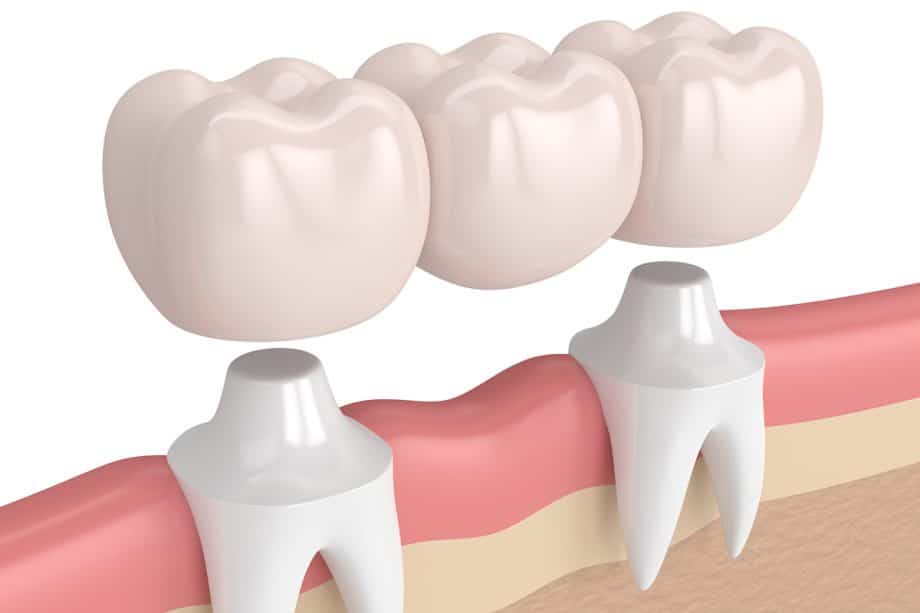If your oral health has been compromised by decay, trauma, or tooth loss, your dentist may recommend a dental bridge to restore your smile.
Bridges are a popular choice for replacing one or more missing teeth. There are several types of bridges, but they all function by attaching to adjacent teeth to support the replacement teeth.
What is a dental bridge?
Missing teeth cause problems with eating, speaking, and chewing. In addition to these functional problems, teeth on either side of the missing teeth can gradually drift into the space, altering your bite. A bridge is a fixed, non-removable dental restoration—an excellent way to replace missing teeth.
How does a dental bridge work?
A crown will be placed at either end of the bridge over the existing teeth. Some amount of enamel will typically need to be removed from these teeth so that a crown can be placed over them. Since these teeth act as support, they need to be strong enough to hold the bridge in place.
The crowns are connected by a false tooth, or pontic, which fills in the space where the missing tooth used to be. The artificial tooth is generally made of porcelain or ceramic for strength, durability, and a natural appearance.
What are the different types of dental bridges?
Different types of dental bridges are available, depending on a patient’s specific needs. Each has the same purpose—to replace missing teeth while preserving the adjacent teeth and gums.
Dental bridges can be classified into these types:
Fixed bridge. Fixed dental bridges literally bridge the gap created by one or more missing teeth. A crown is placed on each tooth (abutment) on either side of the gap. A false tooth or teeth are then attached to the abutments to fill in the gap in your smile.
Removable bridge. Typically made of porcelain and metal, such as gold, titanium, or steel, this type of bridge is removable. This type of bridge can be adjusted for comfort and removed for cleaning.
Cantilever bridge. The cantilever bridge is similar to a retainer in that one end is secured to your natural teeth at the gum line, and the other end supports one or more false teeth that fill in the gap created by the missing tooth or teeth.
Implant-supported bridge. Rather than relying on natural teeth to support a bridge, a dental implant may be used to support one or both sides of the bridge. This is a popular option because it can result in a highly secure restoration. This solution is especially beneficial when several adjacent teeth are missing.
How long do dental bridges last?
Many factors contribute to the longevity of dental bridges, including the position and condition of the adjacent teeth, your overall oral health, and your ability to care for your bridgework properly. A dental bridge lasts between five and ten years on average—sometimes even longer with optimal care.
Your bridge will need to be repaired if you notice gum irritation or if your bite feels off around the area of the bridge. To ensure your bridge is functioning properly and to maintain your dental health, visit your dentist regularly for check-ups and cleanings.
Learn More About Dental Bridges
Dental bridges are an effective, long-term way to restore your smile. If you're considering a dental bridge, Dr. R.R. Williams, DDS, and the entire team are here for you. Contact us today at 817-281-4801 or request an appointment online.

